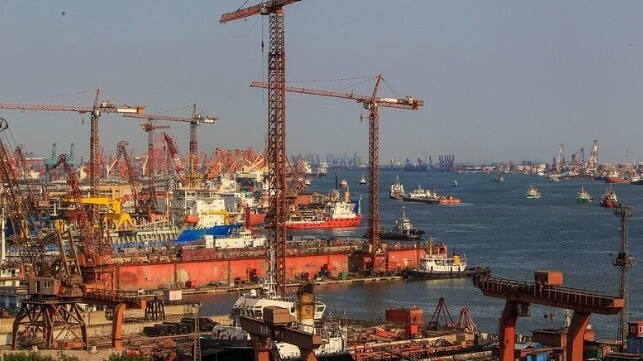Port of Tianjin Signs Up for Semi-Autonomous Tugs

China’s Port of Tianjin has plans to deploy next-generation tugs with decision-support systems, thanks to the support of Wärtsilä and China Classification Society.
The enhanced tugboats are expected to begin operation at the giant industrial seaport in the fourth quarter of 2023. Though not strictly autonomous, they will be equipped with an advanced situational awareness system that can detect small objects in restricted visibility and provide decision support to the crew. The technology is not necessarily limited to port operations, and it could also be applied and extended to other vessel classes.
As an example of the capabilities of the firm's decision-support technology, a freighter equipped with its automation system regularly drives itself up and down the narrow Cuyahoga River in Cleveland, Ohio. The developers say that the 630-foot twin-screw vessel is capable of berthing, backing down, turning around, and navigating the tight confines of the river on its own, keeping to its trackline with a position tolerance of about six feet - all without azimuthing drives.
“Considering the Port of Tianjin is one of the top ten busiest ports in the world, as well as its strategic importance in China’s shipping [landscape], this is an excellent pilot case which opens many other opportunities for collaborations in the region,” said Sean Fernback, Wärtsilä Voyage President.
As part of the partnership, Wärtsilä Voyage will conduct user research to improve work performance and safety. The company will also work hand-in-hand with CCS in developing first-of-a-kind intelligent vessels standards and guidelines for domestic vessels. CCS has already published "intelligent-ship" rules for ocean-going vessels, but with more than 120,000 inland vessels in service in China, there is a need for creating similar guidelines for the inland segment.
“This project complements our larger vision of safer and more sustainable port operations, as well as gives us the opportunity to explore further collaborations to enhance our smart port services in the future,” said Yang Jiemin, Tianjin Port Group Vice President.
The Port of Tianjin, the largest port in Northern China and the main maritime gateway to Beijing, ranks as the seventh-largest port in China in terms of total cargo throughput and the sixth in terms of container throughput. According to the port’s interim results for the six months ended June, total cargo throughput stood at 222 million tons, an increase of 11 percent over the same period last year while total container throughput volume was up 20 percent to 10 million TEUs. The port posted a 38 percent increase in revenues to $1.1 billion.
Tianjin is also the world’s first port to get approval for an autonomous driving demonstration zone, and it has a fleet of 25 unmanned electric trucks.
Top image: Inland traffic at the Port of Tianjin (File image courtesy ADB / CC BY-NC-ND 2.0)
